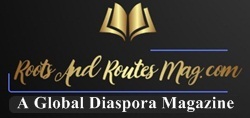Redefining Beauty Standards in a Diverse Society

In today’s society, beauty standards have often been narrow and exclusionary, dictating unrealistic expectations and perpetuating harmful stereotypes. However, as our understanding of diversity and inclusivity evolves, there is a growing movement to redefine beauty standards and celebrate the diversity of human appearance. From challenging conventional notions of beauty to embracing individuality and authenticity, let’s explore how we can redefine beauty standards in a diverse society.
- Embracing Diversity: Beauty comes in all shapes, sizes, colors, and forms. Yet, traditional beauty standards have often favored a narrow and homogeneous ideal, excluding individuals who do not fit into this mold. By embracing diversity in all its forms, we can challenge the notion that there is only one standard of beauty. Celebrating diverse physical features, including varying skin tones, body types, facial features, and hair textures, is essential for promoting inclusivity and empowering individuals to embrace their unique beauty.
- Challenging Eurocentric Beauty Ideals: For too long, Eurocentric beauty ideals have dominated mainstream media and influenced perceptions of beauty around the world. These standards prioritize features traditionally associated with European ancestry, such as fair skin, straight hair, and narrow facial features, while marginalizing individuals with diverse cultural backgrounds. Challenging Eurocentric beauty ideals involves rejecting the notion that one standard of beauty should prevail and recognizing the beauty inherent in all cultural identities.
- Promoting Body Positivity: Body positivity is a movement that advocates for self-acceptance and appreciation of one’s body, regardless of size, shape, or appearance. In a society that often equates beauty with thinness and promotes unrealistic body standards, promoting body positivity is crucial for fostering self-confidence and combating body shaming and negative body image. By embracing body diversity and rejecting societal pressure to conform to narrow beauty standards, individuals can cultivate a positive relationship with their bodies and prioritize their mental and emotional well-being.
- Amplifying Underrepresented Voices: In the quest to redefine beauty standards, it is essential to amplify the voices of underrepresented individuals who have been marginalized or excluded from mainstream beauty narratives. This includes individuals with disabilities, members of the LGBTQ+ community, people of color, older adults, and individuals with diverse cultural backgrounds. By centering the experiences and perspectives of these communities, we can challenge stereotypes, promote inclusivity, and expand the definition of beauty to be more reflective of society’s diversity.
- Embracing Authenticity: Authenticity is the key to redefining beauty standards in a diverse society. Instead of conforming to unrealistic ideals or striving for perfection, individuals should embrace their authentic selves and celebrate what makes them unique. This includes embracing imperfections, quirks, and individual differences as part of what makes each person beautiful. By prioritizing authenticity over conformity, individuals can redefine beauty on their own terms and inspire others to do the same.
Conclusion: Redefining beauty standards in a diverse society requires a collective effort to challenge stereotypes, embrace diversity, promote body positivity, amplify underrepresented voices, and embrace authenticity. By celebrating the uniqueness of every individual and rejecting narrow beauty ideals, we can create a more inclusive and equitable society where everyone feels empowered to embrace their true beauty. Let us continue to challenge conventional beauty standards and celebrate the diverse tapestry of human appearance.

Tariq Riaz is a passionate web developer and content generation expert.








